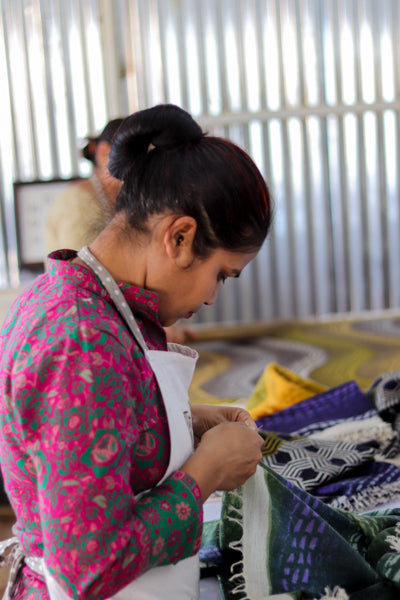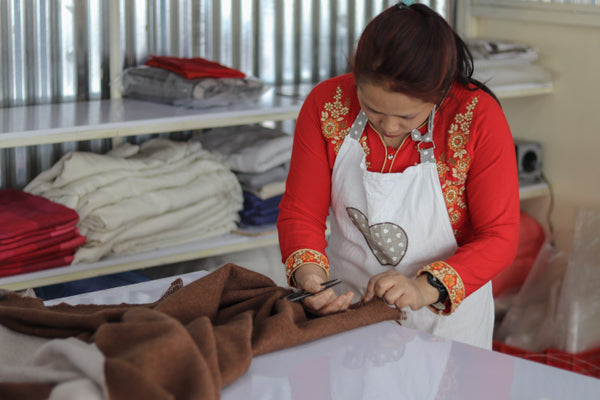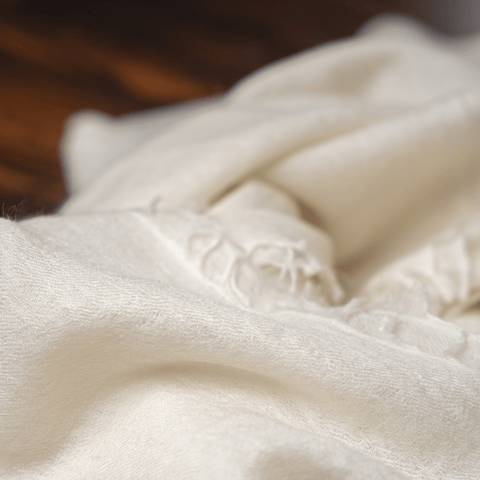CRAFTSMANSHIP
At Imperial Cashmere, we are passionate about crafting beautiful products that also help support the developing communities in Nepal. We take pride in our traditional craftsmanship and use generations of knowledge to create the highest quality cashmere. All of our products are start as AAA grade raw cashmere fibers - indicating the finest quality and adherence to the highest standards of care. Grade A indicates an average fiber diameter of 14-16 microns.
All our products go through more than 40 different processes from fiber to fabric. Each piece is a work of art that is created with love and skill – an expression of modern innovation blended with age-old techniques. Our mission is to show the world what true craftsmanship looks like and to share the stories behind each product’s creation.
TRULY PREMIUM CASHMERE YARNS
At Imperial Cashmere, we believe in using only the best quality materials for our products. That's why our yarns are spun from fibers of length 36-40mm – making them some of the longest cashmere fibers available. Long fibers means our cashmere pieces are more resistant to pilling (the forming of small wool lint on your garment) than cheaper cashmere woolens on the market.
Further, all our yarns are free of any harmful chemicals, certified by OEKO-TEX® standards. Working with world class spinners ensures only the finest fibers are handwoven into the final product.

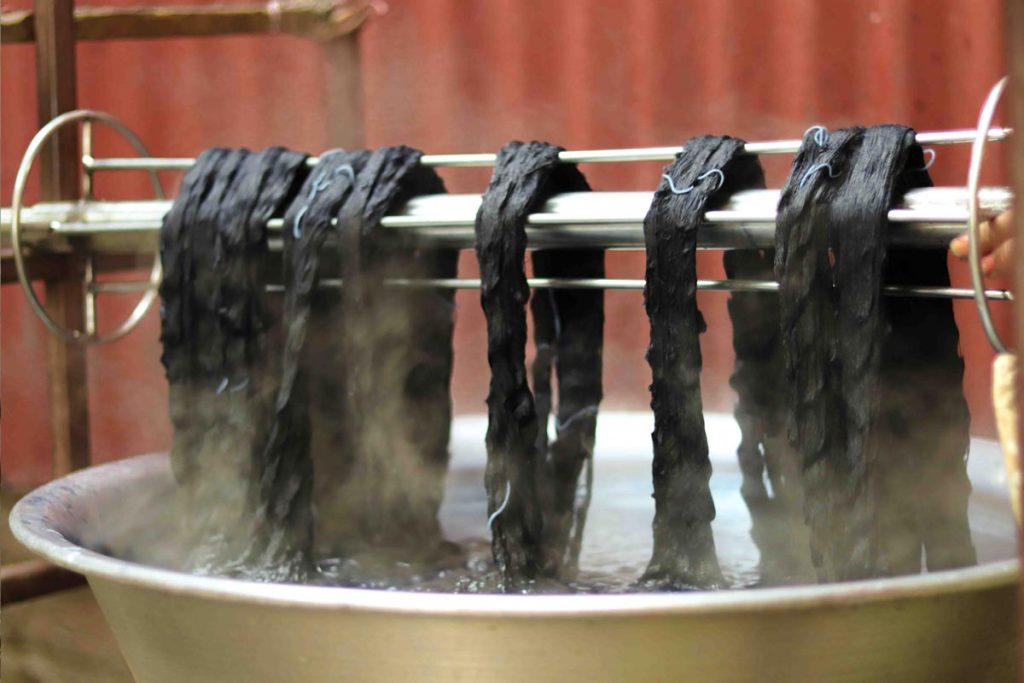
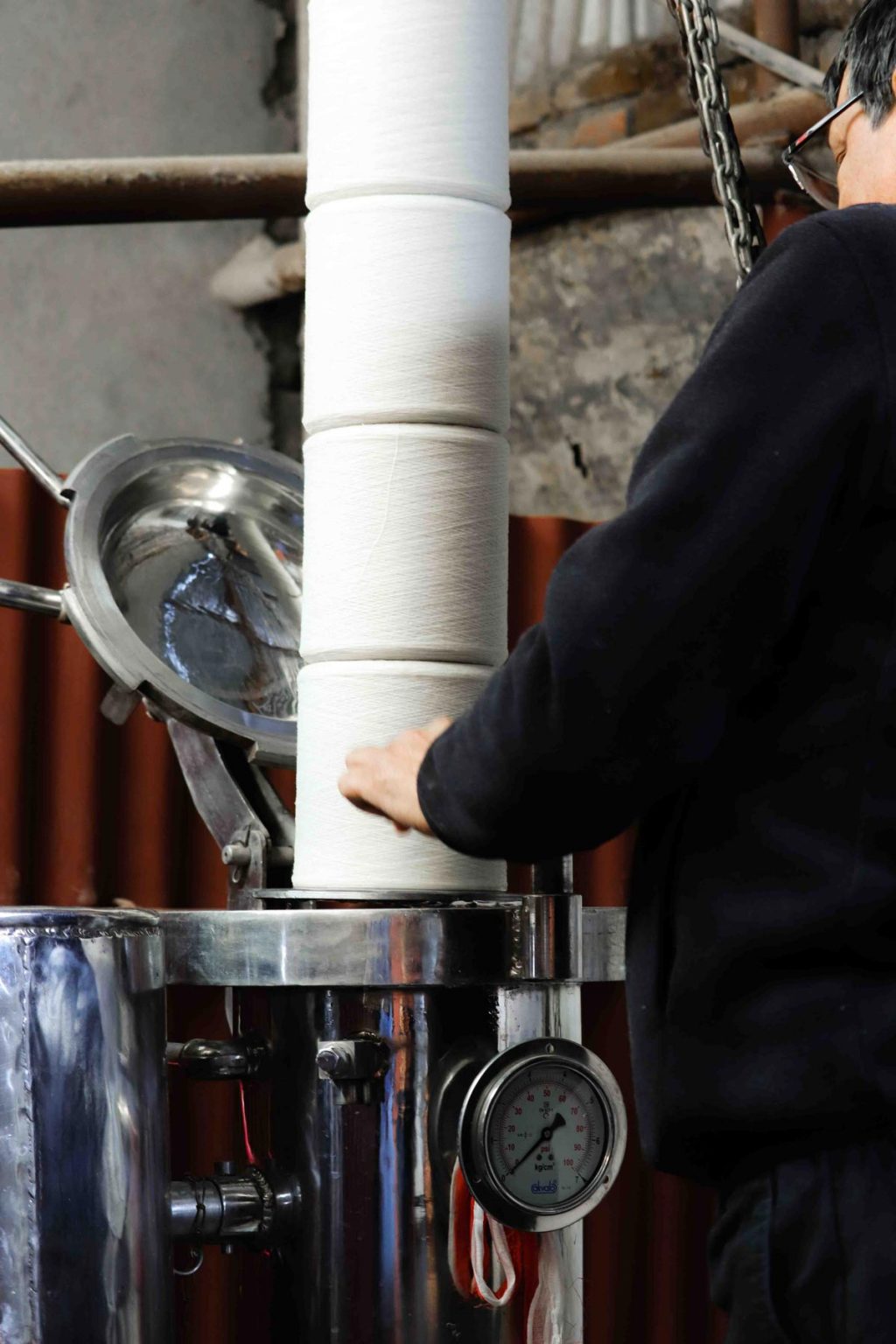
ECO-FRIENDLY DYEING PROCESS
At our dyeing facility, our experienced technicians make use of their expertise and knowledge to select the most suitable dyeing process for our yarns and fabrics. Our four distinct hand-dyeing methods to ensure that all of our products are dyed beautifully and sustainably.
Our range of dyes are not only eco-friendly, but also free of any harmful AZO compounds. We prioritize sustainability and environmental protection in all our production processes, making sure that every step is taken with due respect for our planet and its resources. We believe that family values and lasting principles should always be at the heart of everything we do.
WINDING PROCESS
Yarns that have been dyed require an organized process to be transformed from a hank into fabric. Every inch of yarn is carefully handled by our team of skilled winders, who take the time to delicately wrap it into a cone shape. Once these cones are properly formed, they are passed on to our machining department, where they will be placed in looms to turn into fabric.
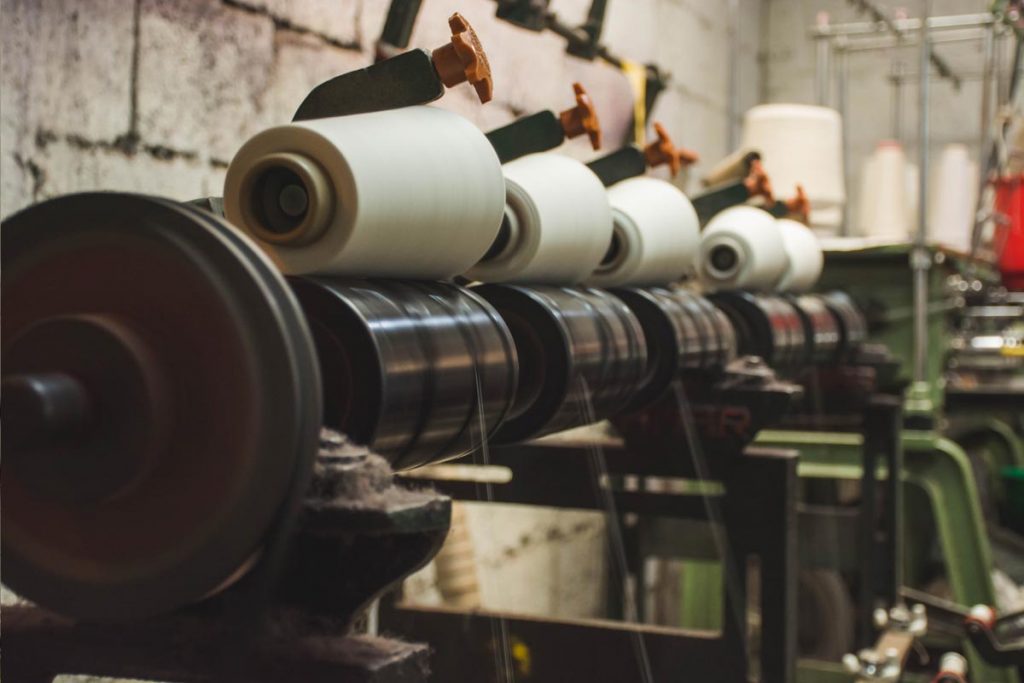
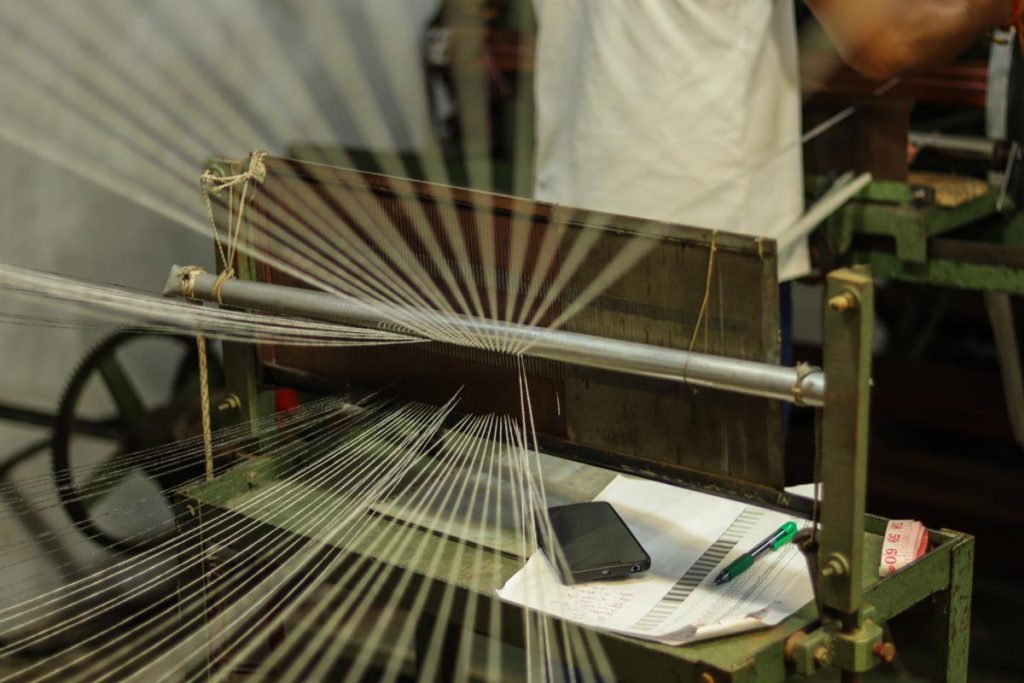
PRE-WEAVING PROCESS
Our process begins with the feeding of warp (vertical) yarns into the loom. The loom consists of several components, such as the warp beam, heddles, harnesses or shafts, shuttle, reed and takeup roll. And fabrics are created by eventually weaving the "warp" and "weft" yarns together.
PRE-WEAVING PROCESS
The total warp yarn length and number of yarns depend on the desired length, width and thickness of the fabric. A proper warp factor needs to be determined to maintain the desired cover factor (the fraction of the area of the fabric covered by both warp and weft yarns), which ultimately determines the fabric’s longevity.
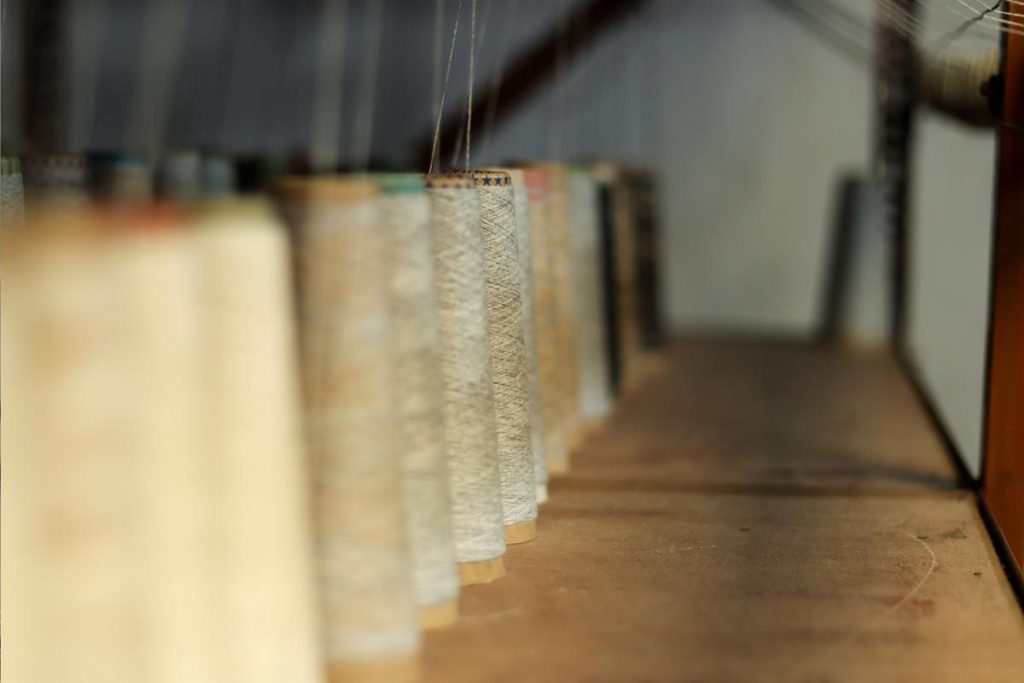
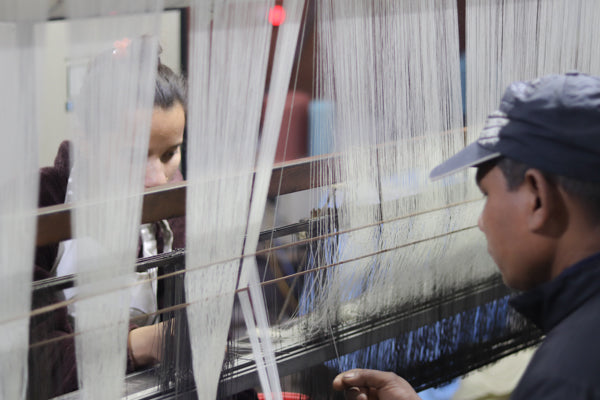
PRE-WEAVING PROCESS
The warp yarn is carefully wound around the warper’s beam to prepare for drafting. Drafters a hook to pull each piece of warp yarn through the eye of the heddles on the loom. Each thread is individually transferred to heddles by hand, and the sequence of the yarn in the heddles dertermine the end design.
WEAVING PROCESS
Weaving is where the magic happens. It is where we take great pride in our craftsmanship.
At our factory in Nepal, the art of weaving was inherited from one generation to another, passed down from mother to son. This traditional style of weaving is a lost art in most of clothing production today, especially in cashmere Made in China.

WEAVING PROCESS
Weft yarn runs horizontally across the fabric that interlocks with the warp yarn to create a raw fabric.
Our two weaving techniques are Dobby and Jacquard. Both techniques use traditional power looms, which are responsible for producing elegant borders that cannot be achieved with modern rapier looms. We have Dobby Looms to thank for our signature felted and diamond scarves, while Jacquard looms make much more complex designs.
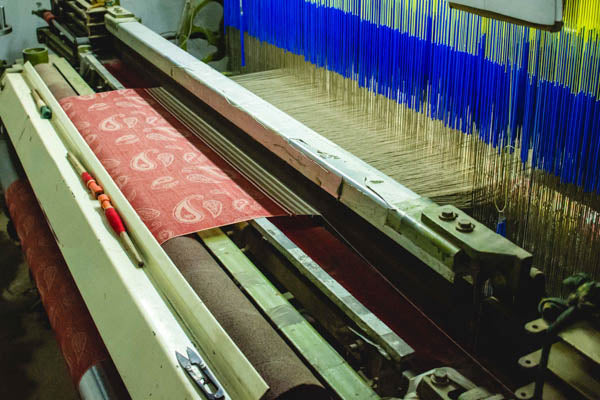
KNITTING PROCESS
We use a fully fashioned flat knitting machine to create each and every garment. This means that each piece of knitwear passes through the hands of skilled knitters crafting each piece with precision and care. Each stitch is individually placed, ensuring a perfect fit from top to bottom, from the front to the back of the garment.
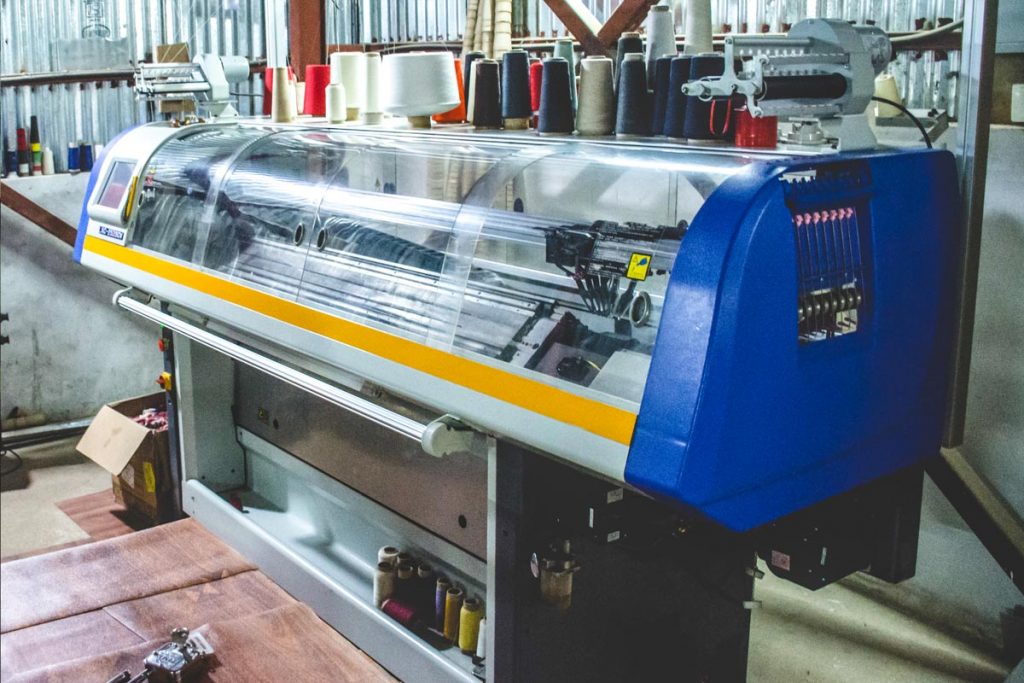
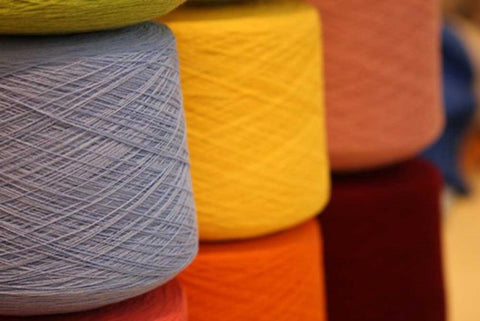
WASHING AND FINISHING PROCESS
Raw woven clothes need to be washed and finished so they can look their best. This process has been the same for decades, even as other parts of making fabric have changed with the times.
Boiling and scouring help get rid of oil and make the fabric soft. Depending on what the item is being used for, it may undergo further processes like felting or calendaring too. Our cashmere products such as scarves, stoles, beanies and gloves are made with with the same standard of care so they last for years and years to come.
FINISHING TOUCH
Finishing touches are made by hand, and the final product goes through a quality check before it is packaged and delivered straight to your door.
